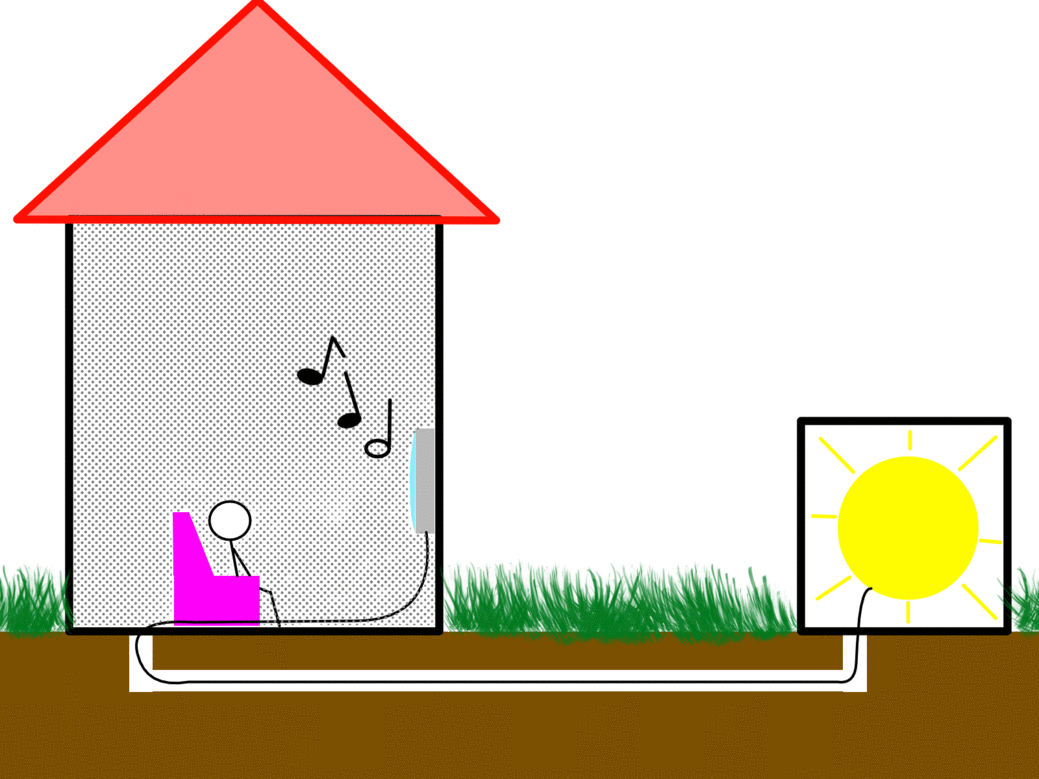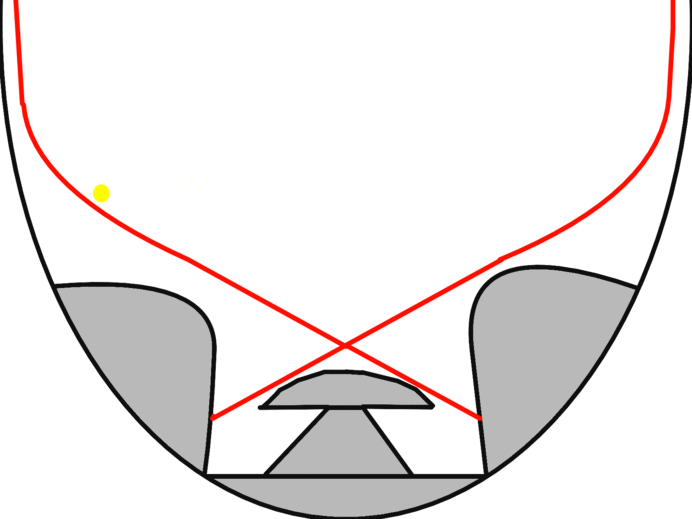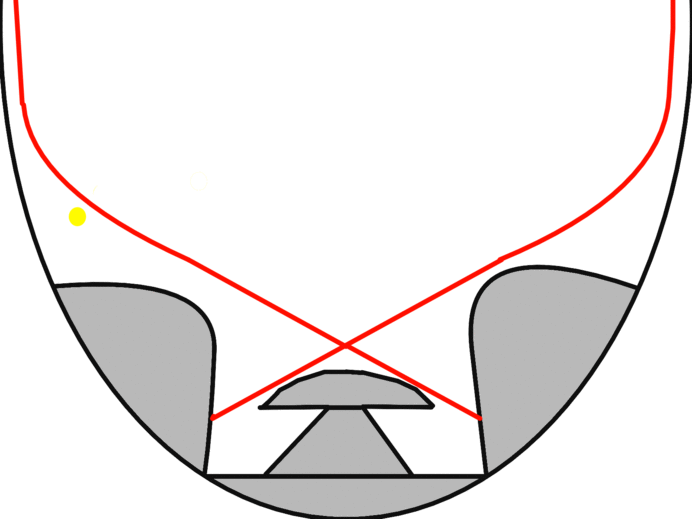A: What are the different ways of harnessing fusion energy on Earth?
.gif)
Welcome to the fourth and last section in the Introduction of the A guide to Thermonuclear fusion energy. By clicking on the provided link you can go to the table of contents of the guide where you can browse the already done subjects. Soon it will be also edited to show the upcoming subjects we will cover in the following weeks. Remember, by the end we want to paint a clear picture of how we can trap the Sun in a box and by plugging a power cable into it, use it to power our everday lives.
For todays topic, we will answer the question in the title. What are the different ways of harnessing fusion energy on Earth? We will also try to elaborate on the pros and cons of each way of using different techniques mentioned.
Inertial confinement
Lets get the least promising out of the way first. The first method of harnessing fusion is very simple and mimics the processes that occur in the Stars almost exactly.
As the basis all the techniques falling into the inertial confinement category require a vacuum vessel with a solid pellet inside. The pellet should contain as much tritium and deuterium fuel in some solid matrix. Usually solid tritium and deuterium is used as hydrogen isotope how a quite high freezing temperature at around 14 K [1] and can be frozen by liquid helium. It is not cheap but technologically quite well understood.
Then one should light a very strong laser onto the pellet as isotropically as possible. The laser light shining on the pellet from all sides shatters the pellet extremely quickly so the gasses that evaporate are compressed to extremely high pressures and temperatures. In this implosion of gases the conditions are suitable for fusion to occur for a very brief amount of time.
Although research on this technique has slowly died down in recent decades as scientists saw more potential in the magnetic confinement technique, some research is still going on. For example a laser facility called HiPER [2] is supposed to function as a proof of principle that such Inertial confinement can produce more power that is put in to heat the pellets. You can also find a scientific article open to the public here [3].
Although inertial confinement has advantages compared to magnetic confinement, like:
- Being way cheaper infrastructure-wise. ITER will cost about 20 billion dollars [4], while HiPER will cost about ten times more. It is hard to give concrete numbers as they are not easily found, but the technology involved would mean it is quite cheaper and more easily built
- The technology involved is quite simple and well developed in industry, which is why the spread of such reactors would be quite fast and easy.
On the other hand there is a big disadvantage. There was never a proof of principle that such a technique produces an energy surplus, mainly because of the very low confinement time that is inherent for inertial confinement. At the end of the day, this is a very controlled explosion.
Magnetic confinement - Tokamaks
Magnetic confinement uses the fact that if we achieve that the deuterium + tritium are hot enough they would be in a plasma state. In a plasma the electrons are separated from the nuclei therefore the nuclei are charged. If one puts a charged particle on a magnetic field line it cannot leave it unless some external force is applied. In magnetic confinement the deuterium + tritium gas is enclosed in a vacuum vessel and an external magnetic field is applied which entraps the particles in the plasma from getting into contact with the wall. There are two types of magnetic confinement - tokamaks and stellarators - but here we will focus on tokamaks.
Of course if you remember from previous chapters the plasma is ten times hotter than the center of the Sun so we must prevent it from coming in contact with the wall in a major way. Some instabilities will always occur that will transfer power the plasma heat to the wall, but their power load is way smaller than the entire energy of the plasma, which means we can handle such instabilities.
Now lets return to the interaction between the magnetic field and the plasma. Because the charged particles are trapped on the magnetic field lines this means that the magnetic lines that are in the shape of loops (beginning meets the end) and where the entire loop is inside the vacuum vessel will confine the plasma. On the other hand some magnetic lines form loops that also enter the wall. This means that a hot spot will occur as plasma particles hit the wall where the magnetic line penetrates the wall. Normal fusion relevant materials would be faced with massive damage because of thermal expansion, erosion of the wall, melting and so on. This means we must control the magnetic field lines very well and we must also control where the outer most still looped magnetic field line meets the wall. There are two ways of defining the last looped magnetic field line called the separatrix. It is called like this because it separates the part of the plasma which is confined and the part of the plasma that is in contact with the wall.
Limiter
The first scheme of defining the separatrix is called the limiter configuration. The limiter is a simple piece of metal or some other appropriate material that defines the last round shaped looped magnetic field line.

The principle is described in the gif on the right. The separatrix is drawn as the red line, the orange things are the wires of the superconducting magnetic coils and the black is the vacuum vessel. The pertursions in black in the vacuum vessel are the limiters that confine the plasma.
As one can imagine the limiter is under an insane stress due to the impacting particles shown as yellow circles. If it was only a metal the metal would face severe erosion. As the metal would erode it would not only damage our limiter, but also contaminate the plasma. Metals have very large numbers of electrons which means they are difficult to ionize. If there is a particle in the center of the plasma which is not completely ionized it emits a lot of light through electron transitions from different orbitals. This cools the plasma and fusion stops.
An almost perfect solution was discovered for this. The limiter would be coated with a film of amorphous carbon. Being amorphous it has a very good self-healing characteristic where atoms that are eroded usually get deposited back on the limiter very soon. Also if some carbon atoms wonder into the center of the plasma they are ionized easily as they only have 6 electrons. But it has a severe drawback. Carbon forms chemical bonds with hydrogen isotopes which means the retention of our fusion fuel would be huge in the walls. This is bad because we not only lose our valuable tritium into the wall, but also due to the fact tritium is radioactive so now our walls are radioactive.
Divertor
So a new solution was found. The limiters were scrapped and we basically gave up on round magnetic field lines. Instead we would install a divertor at the bottom that quite literally diverts the plasma that would normally hit the walls to instead hit the divertor.


One can observe how this x-shaped separatrix affects the yellow plasma particles in the two possible cases. In the right gif you see a confined plasma particles that is traveling just on the inside of the separatrix. The most boring case ever and that is how we like it. The more interesting case is in the left gif. This is the same unwanted process where a plasma particle interacts with the wall as in the limiter case.
As the particle impacts the wall near the strike point a whole zoo of processes can occur. We will touch on them in some later chapter. But some times a wall-constituting atom is eroded and it enters the plasma. But because of the geometry of the divertor it is extremely difficult to leave the divertor once you are in it and sooner or later it gets redeposited onto the wall. This means by pure geometry we imposed some self-healing properties on the wall material.
This means we can forget the great self-healing carbon and focus back on metals. We can focus on metals because very little eroded wall material will enter the plasma center because of the geometry. It is quite genius. We want to use metals because they have a very low erosion yield, they dont react strongly with hydrogen isotopes and therefore retention is low, their thermal conductance is good and so on. The prime candidate is tungsten (W) which will be used in the first generations of tokamaks like ITER in the divertor.
Pros and cons of tokamaks
Now lets talk about the pros and cons of tokamak so we can compare with the inertial confinement method.
The main disadvantage is of course cost. For ITER which will cost 20 billion and produce 0.5 GW of power this is quite an investment. This makes tokamak reactors expensive for commercial electricity providers to build them themselves which means they will have to be built by the governments. This means that building will be even more expensive and slow due to bureaucracy. But one can expect that as tokamak technology advances this disadvantage will slowly disappear. Another disadvantage is the technological difficulty of building such a machine. For instance almost 30 m superconducting coils will have to be made with a precision of 1 mm.
Now onto the advantages. The main one is that as we start to understand plasma physics better and better we could achieve steady state plasma operation. Right now the longest shots are about 10 minutes in stellarators and about a few minutes in a tokamak. This is several orders of magnitude larger than inertial confinement. This means of course that more energy can be produced. Another advantage is that the fusion reaction is very well controlled which means severe accidents are stuff like vacuum vessel leaks, which are not really a severe danger to the environment.
This is of course nowhere near a complete list, but more of like an overview.
Conclusion
In the next chapter of our guide we will focus more on tokamak operation and physics, as it appears it has turned out that is it the best concept for exploiting nuclear fusion on Earth. This was not my decision but more like a consensus made by public funding of various projects.
StemQ
I have been posting these posts in https://www.stemq.io/. You can learn more about the project here. I suggest that if you have any minor comments or questions you can post them down in the comments section, but if you have major questions post a question on the StemQ page and I will answer them there, as StemQ is a Q&A dApp based on the STEEM blockchain.


References
[1] - J. Dewar, "Sur la solidification de l'hydrogène". Annales de Chimie et de Physique. 18: pp. 145–150, 1899
[2] - http://www.hiperlaser.org/
[3] - https://www.researchgate.net/publication/272412348_Inertial_confinement_fusion_and_prospects_for_power_production
[4] - https://www.iter.org/faq#Do_we_really_know_how_much_ITER_will_cost
StemQ Notice: This post was originally submitted on StemQ.io, a Q&A application for STEM subjects powered by the Steem blockchain.
Meant to ask, is the vacuum vessel acting as an insulator?
How thick is it?
The wall is about 10 cm thick. Maybe a bit more but not by much.
So the walls are conductive. This is because electrical isolators are also thernal isolators, because the mechanism of conductance is governed by electron mobility in both cases. If an isolator would be used not enough heat transfer would occur to effectively heat the water that will be used in the electricity generation.
This is a great post.
I enjoyed reading your clear explainations.
The GIFs are fantastic.
I recommend that you add some copyright under these because you deserve to be credited for the hard work.
Great job.
I might think about a signiture of some kind. I dont really mind other using the gifs but it is true that making such an animation takes about 2 hours. Maybe a bit less.
Anyway... Thank you a lot. I hope the message I am trying to convey is clear.
This post has been voted on by the SteemSTEM curation team and voting trail in collaboration with @utopian-io and @curie.
If you appreciate the work we are doing then consider voting all three projects for witness by selecting stem.witness, utopian-io and curie!
For additional information please join us on the SteemSTEM discord and to get to know the rest of the community!
Hi @maticpecovnik!
Your post was upvoted by Utopian.io in cooperation with @steemstem - supporting knowledge, innovation and technological advancement on the Steem Blockchain.
Contribute to Open Source with utopian.io
Learn how to contribute on our website and join the new open source economy.
Want to chat? Join the Utopian Community on Discord https://discord.gg/h52nFrV
Hi, @maticpecovnik!
You just got a 0.27% upvote from SteemPlus!
To get higher upvotes, earn more SteemPlus Points (SPP). On your Steemit wallet, check your SPP balance and click on "How to earn SPP?" to find out all the ways to earn.
If you're not using SteemPlus yet, please check our last posts in here to see the many ways in which SteemPlus can improve your Steem experience on Steemit and Busy.
Congratulations @maticpecovnik! You have completed the following achievement on the Steem blockchain and have been rewarded with new badge(s) :
Click here to view your Board of Honor
If you no longer want to receive notifications, reply to this comment with the word
STOPTo support your work, I also upvoted your post!
Do not miss the last post from @steemitboard:
Do you plan to write such a detailed article on stellerators as well? Those are much more recent (I think) and I would be glad to read more about them in your blogs :)
Except this, I really enjoyed this article. Very clear, as usual :)
The problem is that the physics of stellerators are very difficult as the geometry of the machines are inherently 3D, while tokamaks are 2D.
I might do a seperate post on stellerators which is not a part of my Guide to Fusion as I dont really see how it fits in.
I am glad you like the posts. I really need to work on my grammar but usually I am working on such a post for 4 hours and am pretty tired by the end.
What I usually do is to write on one pay and post 1-2 days later. This helps me a lot for what concern grammar and spelling. Note that this is just a suggestion.
Thanks for considering writing on the stellerators! :)
@trufflepig
Thanks for calling @maticpecovnik! Here is a small upvote for this post and my opinion about it.
To my mind this post is at least 10 SBD worth and should receive 169 votes.
By the way, you can find TODAY'S TRUFFLE PICKS HERE.
I am
TrufflePig, an Artificial Intelligence Bot that helps minnows and content curators using Machine Learning. If you are curious how I evaluate content, you can find an explanation here!Have a nice day and sincerely yours,

TrufflePig